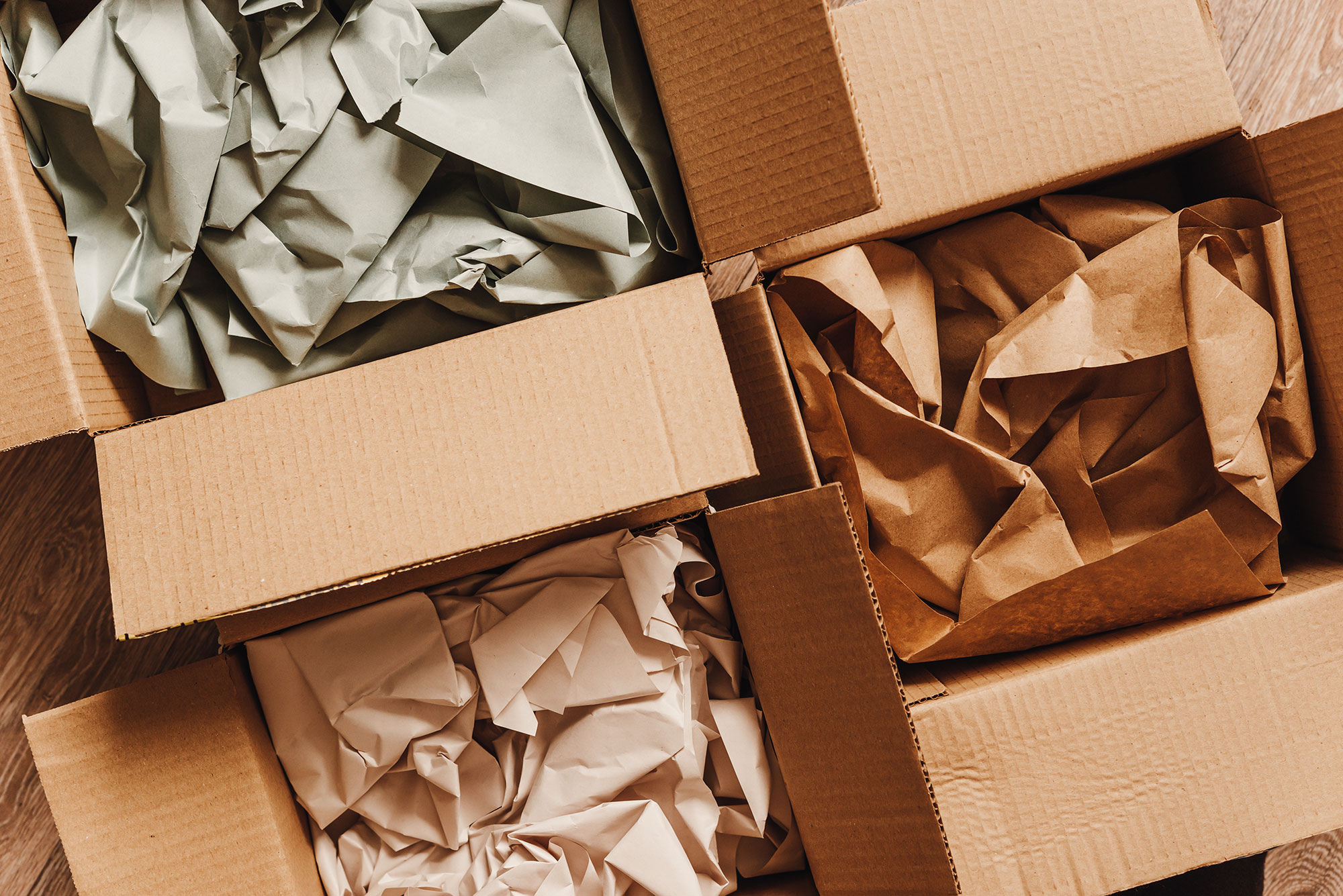Brands have their work cut out for them in today’s retail and e-commerce marketplaces. Competition is fierce as products fight for consumer attention, meaning it’s more important than ever for companies to find a way to leave a meaningful mark on shoppers. In recent years, loud colors, intricate graphics, and big typography dominated the packaging industry. While those choices still have their place, a new trend is emerging: minimalist packaging design.
This shift toward a more simplistic, pared-back design isn’t just about aesthetics; minimalist packaging is also a response to evolving consumer preferences, an ever-growing emphasis on sustainability, and the need for more efficient production and distribution methods. Brands that embrace minimalism and implement it meaningfully have the potential to create a lasting impact on consumers, cutting through the noise to communicate authenticity, quality, and environmental responsibility.
What Is Minimalist Packaging Design?
At its core, minimalist product packaging revolves around a “less is more” mentality. It is a strategic and creative style focused on stripping back superfluous design elements in favor of refining foundational elements. Brands that use minimalist design successfully ensure every component—color, texture, typography, style, and material—enhances the overall product experience for consumers. This thoughtful restraint often results in a more sophisticated, impactful presentation that also makes it easier for shoppers to engage with and understand a product’s purpose and a brand’s philosophy at a glance.
Why Is Minimalist Packaging Popular Right Now?
Minimalist product packaging is becoming more common in food and beverage, cosmetics, and e-commerce spaces. This rise is driven by several factors.
Growing Sustainability Consciousness
Consumers across key age groups care about sustainability; their buying habits directly support an increasing consciousness about making greener purchasing decisions. 82% of consumers are willing to pay more for products with sustainable packaging. Many actively seek out products that feature eco-friendly packaging design or sustainability credentials. Shifting to minimalist packaging design is often a response to consumer demands and green initiatives, as minimalist packaging generally reduces waste, uses fewer materials, and optimizes production processes.
Combating Visual Overload
Over the years, bold, busy designs essentially became the standard for product packaging in an effort to capture consumer attention. Walk down any aisle in a store and you’ll see a myriad of vivid colors and showy graphics. While there’s nothing necessarily wrong with taking this approach with design, it can leave shelves feeling a little overwhelming. The shift from maximalism to minimalism can be viewed as a refreshing contrast, allowing brands to stand out through simplicity rather than excess. It can make products more recognizable and memorable, which is a benefit at a time when many consumers make split-second decisions when browsing shelves or scrolling online.
Cost and Logistics
Minimalism goes hand-in-hand with streamlining packaging design and distribution. Aside from complex designs, product packaging that leans into maximalism may also feature excessive components or materials. Not only does this usually mean more costs for companies, but also more waste for consumers to deal with. Simpler packaging designs with eco-friendly materials can help reduce production costs and encourage recycling. For example, lightweight, flat-shipping paperboard folding cartons minimize storage space and improve shipping efficiency.
Emphasis on Authenticity and Trust
Consumers are becoming increasingly selective about where they spend their money, especially as rising costs make every purchase more significant. In this economic environment, trust and authenticity are paramount. 88% of surveyed consumers consider “trust” critical when deciding which brands to buy or use. Though consumers are wary about costs, they are actually willing to spend more on products from trusted brands. By focusing on clean, straightforward design free from unnecessary embellishments or distractions, brands can reinforce what makes their products unique. That could translate to greater consumer confidence and, in turn, loyalty.
How to Implement Minimalist Design
Minimalist design might appear easy to execute because it features a bare-bones aesthetic. However, this is not always true. Minimalism is an art, and there is a fine line between simplicity and boredom. To successfully adopt minimalist packaging design, brands need to be strategic, isolate each design aspect, and weave them together in a way that is practical, functional, attractive, and clear to consumers.
Prioritize the essentials: First, determine what is most important for your target audience to see on the packaging. Failing to narrow these elements down can lead to excessive text and graphics.
Embrace negative space: Not every inch of open space needs to be filled on packaging. Leaving room for negative space draws greater attention to the elements you do include.
Perfect the details: Typography, spacing, color selection, material type, and material style all contribute to a design’s success. Clean lines, limited color palettes, and high-quality eco-friendly materials all align with minimalist values.
What Minimalist Design Is Not (and Common Pitfalls to Avoid)
When thoughtfully crafted, minimalist packaging design can be very effective. However, there are a few common mistakes brands need to be aware of. First, brands need to be careful not to oversimplify their design. Stripping away too much can be detrimental, as it can make the packaging feel generic or unmemorable. Identity is everything in branding and marketing, so companies that choose to steer toward minimalist design have to come up with distinctive, recognizable concepts that embody their product and values.
It’s also important for brands to consider if minimalism is right for their product. One study supported previous findings that minimalist design conveys that a product is more natural and luxurious and that the brand overall is more serious. Health and beauty products, along with other personal care products, can benefit greatly from this direction, while some food brands may be better off with maximalism designs if their brand is known for being light-hearted or indulgent.
Create Custom Paperboard Folding Cartons With MOD-PAC
Looking to shift your packaging design strategy toward minimalism? MOD-PAC offers custom and stock folding carton solutions for several key industries, including food and food service, health and beauty, medical, and pharmaceutical packaging. Get in touch with us today to discuss your needs.


